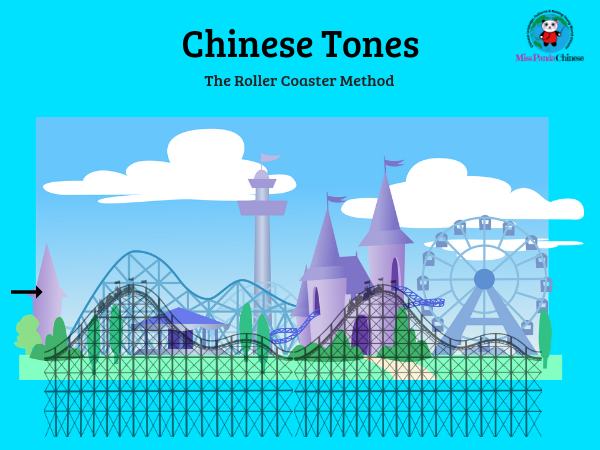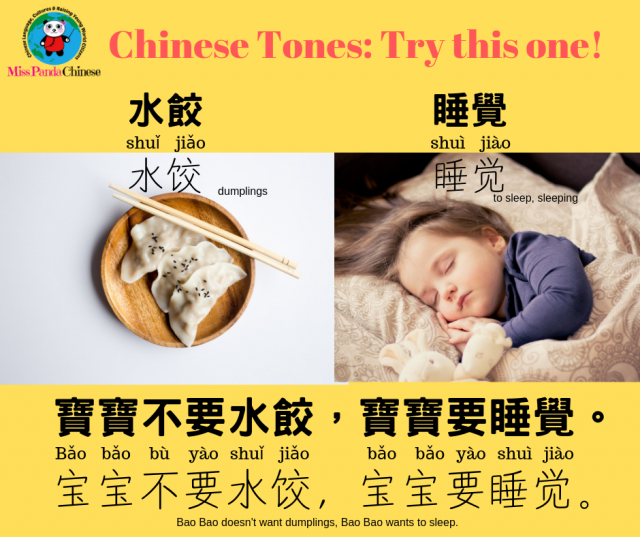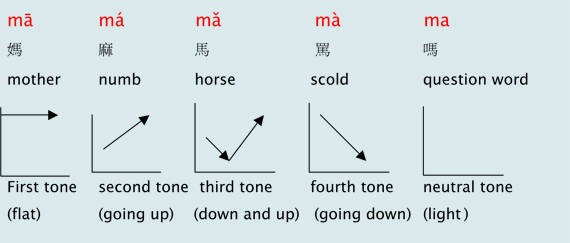Miss Panda would like to share with you a simple and fun way to learn and remember the tones in Mandarin Chinese.
 I created the Roller Coaster method for learning Mandarin Chinese tones. It works like a charm for my young students and adult students. It is a way to help you to practice Chinese words in different tones.
I created the Roller Coaster method for learning Mandarin Chinese tones. It works like a charm for my young students and adult students. It is a way to help you to practice Chinese words in different tones.
We would move our hands in the air, have our heads go up and down, and laugh a lot when we do the tone practice.
But you know the more fun you have the easier you learn. It is okay to make mistakes and make funny twisted tones.
It is how we learn. I always tell the students to make the sound of each word longer so he/she can hear it.
Some people speak fast and some people speak slow. Let’s start slow and speed up later when we feel comfortable with each tone.
Ready for some Chinese tone practice? Here we go!
Here is Miss Panda’s Roller Coaster method for learning Mandarin Chinese tones!!
There are four tones in Mandarin Chinese along with a fifth neutral tone.
Changing a tone changes the meaning and it changes to a different Chinese characters!
 The first tone is flat just like heading out on a roller coaster ride or you can say it is like walking on a flat smooth road.
The first tone is flat just like heading out on a roller coaster ride or you can say it is like walking on a flat smooth road.
The second tone rises like going up hill on the roller coaster.
The third tone falls and rises like riding on a roller coaster.
The fourth tone goes down fast all the way.
The fifth neutral tone is short and lightly spoken, and can be seen in the use of the question word “ma” at the end of a sentence to make it a question. It is like a quick punch – short and light.
For example:
Nǐ haǒ = “Hello” (literally “you good”)
Ni ̌haǒ ma? = “How are you?” (literally “you good?”)
The introduction of tones in Mandarin Chinese is included in the “Let’s Learn Mandarin Chinese with Miss Panda!” CD/MP3 album – the Welcome track. You can click the link and sample the track.
In the chart below, the tone marks are added to pinyin (top in red) to indicate the correct tones of words.
View our Tones in Mandarin Chinese

great chart, simple explanation
So glad to know you find it helpful. Keep practicing and have fun! ~Miss Panda
Thank you! This will help a lot, I think!
Have fun practicing! Happy Learning!